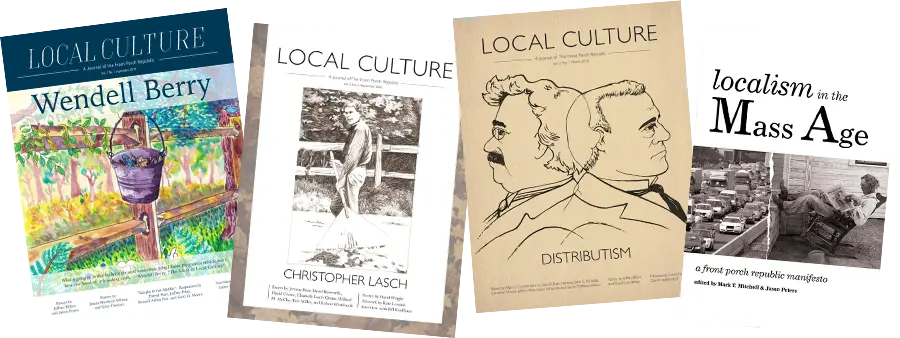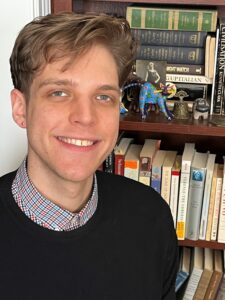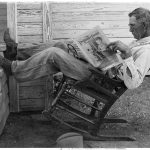Digital media is usually looked down upon by communitarians and those who lament America’s decline in social capital. I tend to agree, as screen time prevents people from engaging with the outside world.
Imagine, then, my surprise when I found someone on TikTok–an app usually associated with brain rot and self-indulgent content–advocating for a return to community vis-à-vis “third places,” a term pioneered by the late sociologist Ray Oldenburg to describe informal, social hangouts outside of home and work.
Madison Rae of Fort Myers, Florida, who goes by @madisonraetogo on TikTok, has garnered an impressive viewership (some videos have accrued millions of views) with her refreshing “Can it Third Place?” series, where she travels with friends around her hometown in search of these little community hubs.
Encouraged, not only by the burgeoning online use of Oldenburg’s term, but by a young person’s desire to engage with it, I decided to reach out to Madison.
“I’m just kicking rocks on the internet,” she told me. I disagreed. Through her series, she is advocating for a kind of Tocquevillian renewal, that is, a call for Americans to actively combat isolation by interacting with and patronizing local mom-and-pop shops and other small businesses.
While her search for third places is almost exclusively confined to Florida–with the occasional out-of-state excursion, including one trip to Washington Square Park in New York City–she’s found that the Sunshine State is actually chock-full of neat little spots for casual socialization.
Her favorite place is Black Crow Coffee in St. Petersburg. When I asked why, she told me that it felt “lived in” and like “humans exist in this space.”
I knew exactly what she meant. Some places just feel kind of cold and sterile, like people are meant to grab-and-go, instead of linger around. Black Crow, Madison told me, has “fun, mismatched furniture” and “a piano for people to play.” This is a place where you can stay a while and unwind.
What’s also great about places like Black Crow is that the barrier to entry–one of the central criteria of third places–is very low: one cup of coffee.
One of the main impediments to social connection, especially for young people eager to escape the confines of their studio apartments, is money. Going out is just too expensive. Dallas-based city planner Rik Adamski expressed his exasperation with the costliness of socialization in a webinar hosted by the Center for the New Urbanism: “Where do teenagers go nowadays, I don’t know… If you’re a high school or college student and the best place for you to go in your community for under $10 to connect with people is the library, there’s something missing, something that you’re being deprived of.”
What’s more, places in Madison’s neighborhood close early. “God forbid we catch an ice cream vibe past 10pm,” she captioned on one of her videos.
So, in effect, what you have are communities filled with businesses with limited hours, pricey drinks, and, in many cases, music that drowns out conversation.
To add to the slew of problems with finding third places in America today, people–in Madison’s locality, and elsewhere–tend to have something of a reserved temperament. They’re plugged into their devices and closed off to conversation with people outside of their immediate circles. Madison, a self-proclaimed extrovert, has no problem with sparking conversation, but that doesn’t mean that everyone is willing to reciprocate. For third places to thrive, reciprocation and a willingness to engage is imperative.
To be sure, Madison has had luck finding vibrant third places like the aforementioned Black Crow. In fact, even her local library wasn’t a total bust. In one video, she initially seemed dubious about the prospects of her library as a third place: “Libraries to me equals silence, and silence equals not meeting people.” To her surprise, though, the library offered some fun programming, events, and areas to connect with others. “It’s nice to go somewhere and not feel like you have to spend money.”
The fact of the matter is that finding active third places nowadays can be an arduous task. Community doesn’t always just come to you; sometimes you have to go out and find it yourself. This, though, requires a communitarian-minded resolve. You have to explore, try new things, and initiate potentially awkward exchanges with others. Isolation only happens when we don’t make an effort.
I’m reminded of one story from Oldenburg’s The Great Good Place, when he attempted to create community in a sad little American pub:
The first, third, fifth, seventh, ninth, eleventh, and fourteenth stools were occupied. Nobody was talking… ‘Anybody got a good story for me?’ was my brazen challenge to this deadly company. Fortunately, number five had several. Unfortunately, they were not good, but I repaid him in kind. The two of us, at least, triumphed over the demon of alienation that held the others in its grip.
Madison, like Oldenburg, is trying to exorcise that demon of alienation. That she’s doing it on TikTok is an irony worth noting. But in the age of the Internet, this is an irony that’s hard for any of us to avoid, and we ought to take her efforts seriously.
Image via flickr.







1 comment
Max
This struck a chord with me. I visited my aunt in St. Pete a few years back, and Black Crow Coffee had a casual atmosphere that made me feel welcome to just exist there.